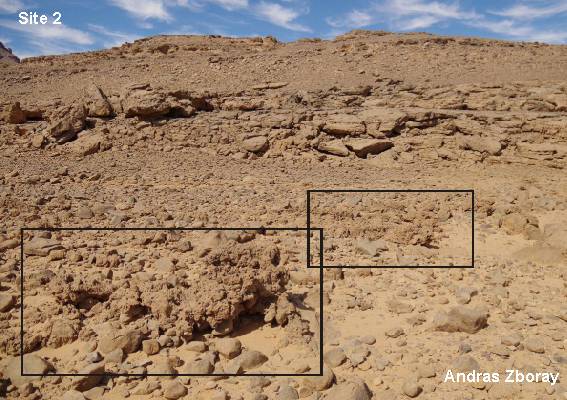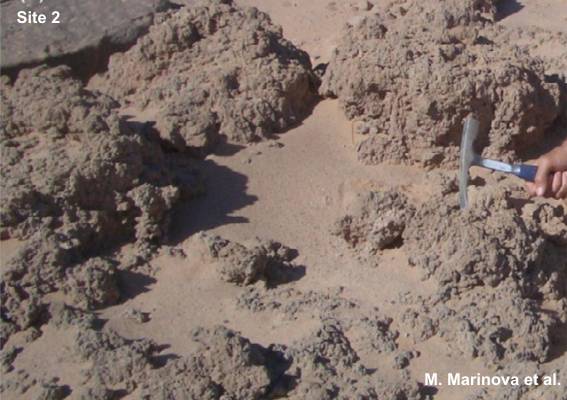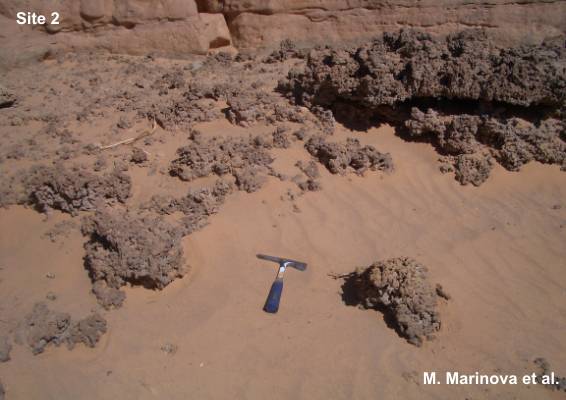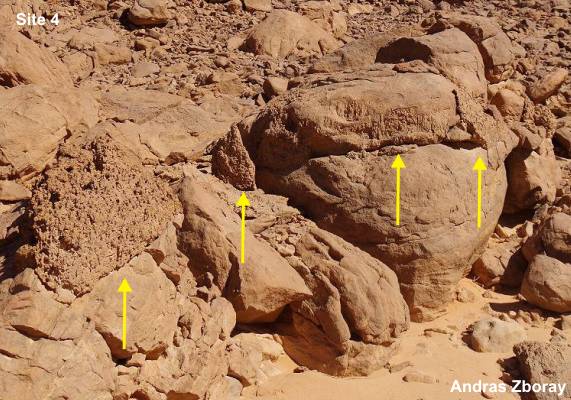Holocene post-volcanic spring deposits in the Jebel Uweinat (SW-Egypt) ?
|
|||||||||||||||||||||||||||||
The results of the investigations, however, must to be interpreted quite differently: There are apparently hydrovolcanic deposits formed in the early Holocene period. These sediments are not of microbially origin and were not in a lake deposited, as assumed. These are deposits that presumably originated from local springs with volcanic water have occured, was laden with minerals-rich carbonate pieces and dissolved iron. The carbonates of the Karkur Talh does only weak or very weak react with formic acid. It contains pyroxene, orthoclase and magnetite as well as unrounded quartz. The proportion of these is high in samples of both sites (46% and 28%, respectively). Against the postulated microbial formation of deposits in these locally and narrow congestion channels with a possible overflow speak the following facts:
� Predominantly Fe-containing sandy deposits The age determination of the sinter-like deposits found in Karkur Talh is a big surprise. That does not necessarily document the actual age of this sandy sinter-like deposits. Organic produced carbonate deposits should not be present in the Karkur Talh. The conditions for a permanntly still water in the Jebel Uweinat are missing. The Jebel is a sandstone plateau. Impermeable layers are missing that would allow a longer accumulation of groundwater. Rainwater seeps and/or flow away into the deeper foreland. Therefore, we must assume that the deposits were associated with hydro-volcanic springs. Moreover, we must assume that such springs were active only relatively short time. So no organic carbonate could develop during the sedimentation in a basin.Between the two deposits in Karkur Talh a difference of maximal 1500 years was determined. This can only mean that the springs were active at different times, which is unlikely. It is more likely that the organic carbonate were later added at different times as contaminant. Today the remains of this sinter-like deposits in the Karkur Talh can be found directly on the edges of the sandstone walls. The deposits, which were originally 1-2 m thick over a length of about 600 m (Site 1), were again eroded by heavy rainfalls. There are two options of origin of non-organic carbonates, formed in the early Holocene period by post-volcanic springs:
3.
Supplement |
|||||||||||||||||||||||||||||
|
|||||||||||||||||||||||||||||
|
|
 |
||||||||||||||||||||||||||||
|
|
|||||||||||||||||||||||||||||
|
|
|||||||||||||||||||||||||||||
































